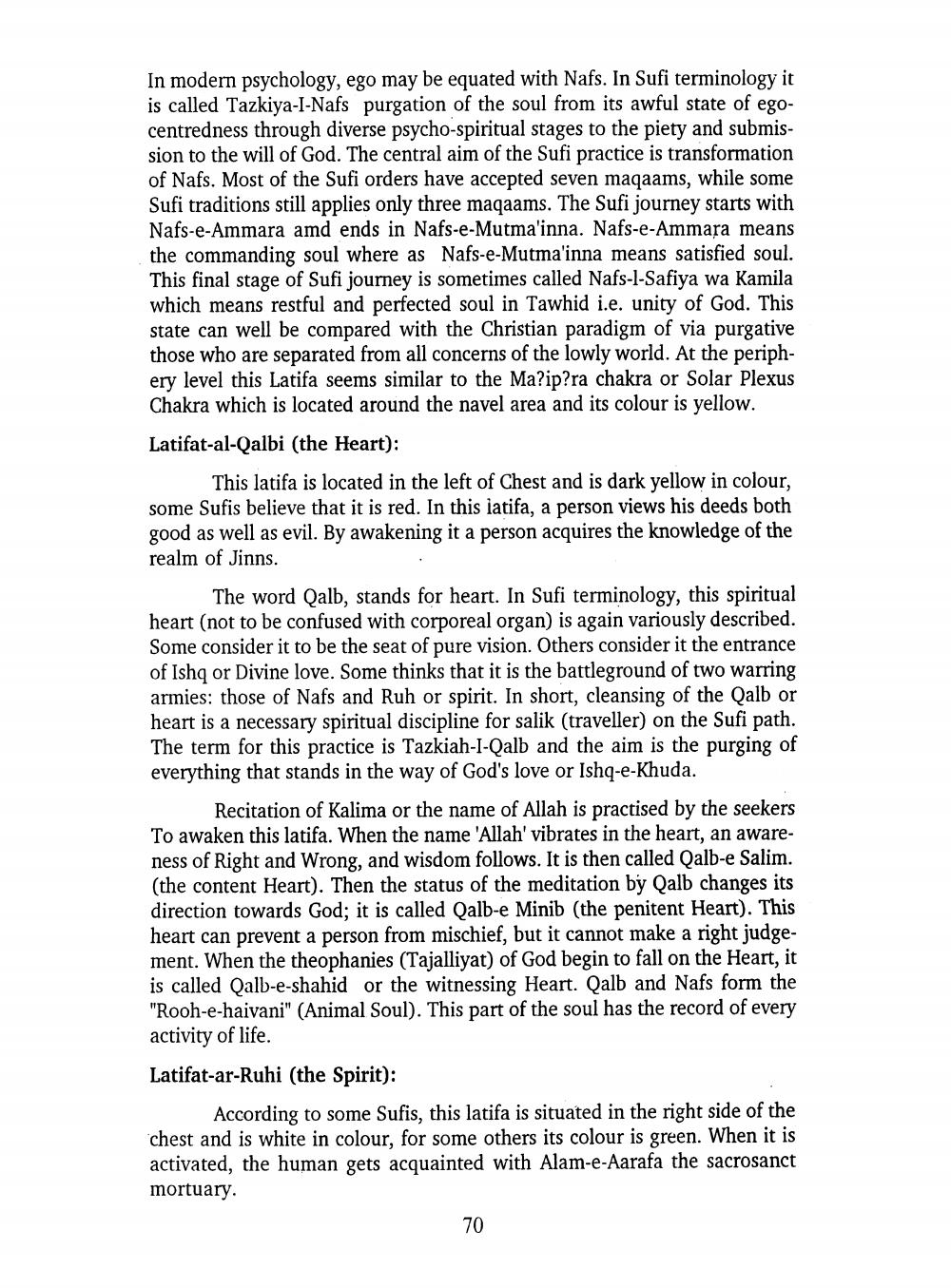________________
In modern psychology, ego may be equated with Nafs. In Sufi terminology it is called Tazkiya-I-Nafs purgation of the soul from its awful state of egocentredness through diverse psycho-spiritual stages to the piety and submission to the will of God. The central aim of the Sufi practice is transformation of Nafs. Most of the Sufi orders have accepted seven maqaams, while some Sufi traditions still applies only three maqaams. The Sufi journey starts with Nafs-e-Ammara amd ends in Nafs-e-Mutma'inna. Nafs-e-Ammara means the commanding soul where as Nafs-e-Mutma'inna means satisfied soul. This final stage of Sufi journey is sometimes called Nafs-1-Safiya wa Kamila which means restful and perfected soul in Tawhid i.e. unity of God. This state can well be compared with the Christian paradigm of via purgative those who are separated from all concerns of the lowly world. At the periphery level this Latifa seems similar to the Ma?ip?ra chakra or Solar Plexus. Chakra which is located around the navel area and its colour is yellow.
Latifat-al-Qalbi (the Heart):
This latifa is located in the left of Chest and is dark yellow in colour, some Sufis believe that it is red. In this latifa, a person views his deeds both good as well as evil. By awakening it a person acquires the knowledge of the realm of Jinns.
The word Qalb, stands for heart. In Sufi terminology, this spiritual heart (not to be confused with corporeal organ) is again variously described. Some consider it to be the seat of pure vision. Others consider it the entrance of Ishq or Divine love. Some thinks that it is the battleground of two warring armies: those of Nafs and Ruh or spirit. In short, cleansing of the Qalb or heart is a necessary spiritual discipline for salik (traveller) on the Sufi path. The term for this practice is Tazkiah-l-Qalb and the aim is the purging of everything that stands in the way of God's love or Ishq-e-Khuda.
Recitation of Kalima or the name of Allah is practised by the seekers To awaken this latifa. When the name 'Allah' vibrates in the heart, an aware. ness of Right and Wrong, and wisdom follows. It is then called Qalb-e Salim. (the content Heart). Then the status of the meditation by Qalb changes its direction towards God; it is called Qalb-e Minib (the penitent Heart). This heart can prevent a person from mischief, but it cannot make a right judgement. When the theophanies (Tajalliyat) of God begin to fall on the Heart, it is called Qalb-e-shahid or the witnessing Heart. Qalb and Nafs form the "Rooh-e-haivani" (Animal Soul). This part of the soul has the record of every activity of life.
Latifat-ar-Ruhi (the Spirit):
According to some Sufis, this latifa is situated in the right side of the chest and is white in colour, for some others its colour is green. When it is activated, the human gets acquainted with Alam-e-Aarafa the sacrosanct
mortuary.
70




